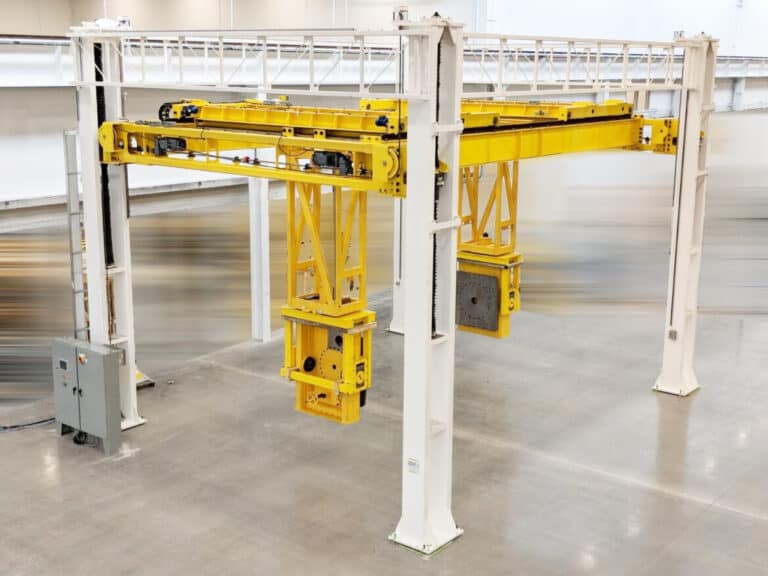Recognizing the Inclusions of moving and Freight Forwarding in the Globe of Residential and Worldwide Delivery
Guiding with the complexities of moving and Freight forwarding can be difficult. Both processes entail distinctive treatments and requirements that are essential for successful transport. Recognizing the differences in logistics, documentation, and threat monitoring is necessary for businesses and people alike. This understanding can significantly influence the effectiveness and safety and security of shipments. However, several are uninformed of the particular components that affect the overall experience and end results. What aspects should one think about to ensure a smooth transition?
The Fundamentals of moving and Freight Forwarding
moving and Freight forwarding are basic elements of the global logistics market. They facilitate the transfer of items and personal belongings throughout international and residential borders. moving mostly involves the relocation of family members or individuals, including residential and industrial demands. It typically includes packaging, filling, carrying, and unboxing items at the location. On the other hand, Freight forwarding is concentrated on the shipment of items, often in bulk, making use of various transportation settings, such as sea, air, or land.freight forwarders work as intermediaries, collaborating logistics to ensure prompt distribution while maneuvering through complicated guidelines and personalizeds procedures. Both processes require cautious preparation, company, and interaction to assure performance and minimize disruptions. Understanding these basics is essential for anyone associated with logistics, as they prepared for more sophisticated elements of delivery and transport monitoring.
Trick Elements of Freight Forwarding Providers
Freight forwarding services encompass several important elements that ensure smooth transport of products. Secret duties of Freight forwarders consist of taking care of logistics, working with deliveries, and taking care of personalizeds clearance. In addition, comprehending vital delivery paperwork is necessary for conformity and reliable motion of cargo.
Freight Forwarder Responsibilities
A reputable Freight forwarder plays a necessary function in collaborating the transportation of items, making certain that deliveries are dealt with efficiently and in conformity with guidelines. Their obligations encompass numerous crucial tasks, consisting of choosing optimal transportation courses, discussing Freight rates, and taking care of logistics. They function as middlemans in between service providers and shippers, ensuring that freight is correctly packaged and classified for risk-free transportation. Furthermore, Freight forwarders track shipments, giving updates to clients concerning the condition and anticipated shipment times. They additionally evaluate and take care of dangers connected with transportation, advising insurance coverage options as needed. By promoting communication and documents, Freight forwarders improve the delivery procedure, decreasing possible delays and improving total supply chain effectiveness.
Delivering Documentation Fundamentals

Recognizing Customizeds Clearance and Paperwork
Accurate paperwork is vital in the custom-mades clearance procedure, as it assures conformity with various regulations. A review of custom-mades policies highlights the complexities encountered by shippers and Freight forwarders. Usual clearance obstacles can significantly impact delivery timelines and costs, making understanding this facet necessary for efficient logistics.
Relevance of Accurate Paperwork
Steering with the complexities of worldwide shipping needs a keen understanding of custom-mades clearance and the crucial duty of paperwork. Exact documents is necessary for ensuring that deliveries comply with guidelines and reach their destinations immediately. Properly prepared papers, consisting of bills of lading, business invoices, and packing checklists, facilitate smooth interactions with customs authorities. Mistakes can bring about shipment delays, penalties, or even confiscation of products. Extensive documents aids in tracking deliveries and settling disputes. Organizations involved in moving and Freight forwarding must prioritize precise paperwork methods to navigate the complex landscape of global delivery properly. This persistance not just simplifies procedures yet additionally enhances customer satisfaction by making sure prompt distribution.
Personalizeds Rules Review
Guiding custom-mades guidelines is a crucial element of worldwide trade that directly impacts the success of moving and Freight forwarding procedures. Reliable custom-mades clearance needs an understanding of different policies, including tolls, obligations, and import/export check out here constraints. Precise documentation is important, as it guarantees conformity with lawful demands and facilitates the reliable activity of products across boundaries. Secret documents often consist of industrial invoices, packaging listings, and bills of lading, which give in-depth information concerning the shipment. Additionally, personalizeds brokers play an essential function in steering complicated policies, working as intermediaries in between personalizeds and shippers authorities. By keeping complete knowledge of personalizeds processes, organizations can significantly lower delays and decrease prices connected with global delivery.
Common Clearance Challenges
Countless difficulties can arise throughout the customizeds clearance procedure, often complicating the activity of goods across borders. One substantial concern is not enough documents, which can bring about penalties and delays. Merchants and importers should assure all required documentation, such as invoices, packing checklists, and certificates of origin, is accurate and total. Additionally, discrepancies in assessment can activate scrutiny from customizeds authorities, leading to additional obligations or inspections. Language barriers may additionally present difficulties, as miscommunication can lead to misconceptions regarding guidelines. Changes in custom-mades guidelines can produce confusion, necessitating consistent caution by shippers. Inevitably, conquering these clearance challenges needs detailed preparation and a clear understanding of customizeds demands to assist in smooth worldwide deals.
Packaging and Classifying Requirements
Although typically overlooked, packaging and labeling requirements play an essential role in the shipping process, guaranteeing that goods are secured and easily recognizable throughout their trip. Proper packaging safeguards items from damages throughout transportation, while also facilitating effective handling and storage space. Utilizing proper products, such as bubble wrap, foam, or tough boxes, can protect against breakage address and loss.Labeling is similarly vital. Exact and clear tags share crucial information, consisting of the location, handling guidelines, and contents. Tags have to follow regulations particular to worldwide and domestic delivery, which might consist of dangerous materials recognition or personalizeds declarations.Moreover, standardized labeling methods simplify the tracking procedure and enhance overall logistics effectiveness. By sticking to product packaging and labeling needs, businesses decrease the risk of hold-ups, damage, or misdelivery. Inevitably, these practices add greatly to the success of moving and Freight forwarding operations, guaranteeing a seamless delivery experience for all events entailed
Tracking Shipments: Significance and Approaches
Efficient packaging and labeling established the structure for successful delivery monitoring, yet tracking deliveries is similarly crucial in the shipping process. Delivery monitoring offers real-time visibility, which aids services and consumers keep an eye on the development of their products. This transparency enhances customer fulfillment, since customers can stay informed concerning shipment timelines and any type of prospective delays.Several methods facilitate reliable tracking. Barcode scanning is a common approach, utilizing distinct identifiers to monitor bundles throughout their journey. Furthermore, GPS modern technology allows accurate area monitoring, enabling prompt updates and enhanced logistics management. Lots of delivery companies currently offer digital platforms and mobile applications that offer customers with very easy access to tracking information.The significance of delivery monitoring can not be overemphasized; it reduces the threat of shed or damaged products, boosts operational efficiency, and promotes trust between shippers and receivers. Integrating effective tracking approaches is crucial for effective domestic and worldwide shipping operations.
Insurance policy Options for Your Item
Securing insurance coverage for goods in transportation is an essential consideration for people and organizations alike. Insurance coverage choices vary based upon the sort of delivery, value of items, and particular risks included. Common types consist of provider liability, which covers loss or damage while en route, and full-value insurance coverage, giving considerable insurance coverage for the complete value of the goods.Shippers might additionally take into consideration aquatic insurance policy for global shipments, securing against dangers connected with sea transport. It is important to assess the specific requirements of the delivery and evaluate the conditions of any policy.Furthermore, understanding exclusions and limitations is vital to stay clear of possible voids in protection. Carriers need to involve with insurance policy specialists to discover tailored options that fit their one-of-a-kind circumstances. Ultimately, buying the appropriate insurance coverage can mitigate monetary risks and provide satisfaction throughout the shipping procedure.
Selecting the Right moving and Freight Forwarding Solution
When picking a moving and Freight forwarding service, it is vital for businesses and people to carefully examine their certain requirements and concerns. Elements such as the quantity of products, destination, and timeline play a significant duty in this decision-making procedure. Researching various companies is a good idea; contrasting their solutions, rates, and consumer evaluations can disclose important insights.Additionally, it is essential to take into consideration the experience and expertise of the provider in taking care of specific kinds of cargo, especially for worldwide shipments that may involve custom-mades clearance. Openness in rates, including any covert fees, need to likewise be scrutinized.Furthermore, evaluating the degree of client support supplied is important, as prompt communication can mitigate problems throughout transit (shipping freight). Validating the accessibility of insurance coverage options ensures that items are secured throughout the delivery procedure. By taking these actions, individuals and services can make enlightened selections that straighten with their logistics needs
Regularly Asked Concerns
What Sorts Of Product Can Be Shipped Globally?

How Do Shipping Prices Vary Between Various Carriers?
Delivering costs vary greatly in between service providers because of factors such as service rate, cargo type, distance, and added services provided. Each service provider's prices version reflects these variables, influencing overall delivery expenses for consumers.
Can I Ship Hazardous Materials or Perishables?
Shipping unsafe he has a good point materials and perishables goes through strict guidelines. Carriers usually need details packaging, labeling, and documents. Shippers need to guarantee compliance with neighborhood and international regulations to stay clear of charges and assure safe transport.
What Should I Do if My Delivery Is Delayed?
When confronted with a shipment delay, one ought to initially contact the provider for updates. Assess any kind of notifications received, assess alternative services, and keep all parties notified regarding the scenario to reduce interruptions.
Exist Weight Limits for Delivery Containers?
Weight restrictions for delivery containers differ depending on factors like container size and shipping regulations. Usually, typical containers have an optimum gross weight of around 30,000 to 32,000 kgs to guarantee safe transport and handling. In comparison, Freight forwarding is concentrated on the shipment of products, commonly in mass, making use of different transport modes, such as land.freight, air, or sea forwarders act as middlemans, collaborating logistics to ensure timely delivery while maneuvering via facility policies and customizeds procedures. Trick duties of Freight forwarders consist of taking care of logistics, working with shipments, and handling custom-mades clearance. A reliable Freight forwarder plays an important role in working with the transportation of items, making sure that shipments are handled successfully and in conformity with policies. Effective product packaging and labeling set the structure for effective shipment management, but tracking deliveries is equally necessary in the shipping procedure. Many shipping firms now supply digital systems and mobile applications that supply users with very easy access to tracking information.The relevance of shipment monitoring can not be overstated; it decreases the risk of shed or harmed items, improves functional effectiveness, and promotes trust between recipients and carriers.